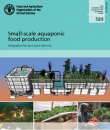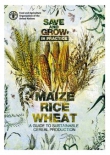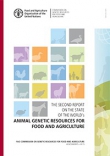Publications

Agriculture is facing an unprecedented confluence of pressures that urges for profound changes in our food and agriculture (crops, livestock, forestry, fisheries, and aquaculture) systems. This publication highlights the summary findings of the report is the outcome of intensive consultations and discussions aimed at developing a common approach to FAO's work on sustainability. That process was conducted in a climate of cross-sectoral collaboration that drew on the contributions of leading FAO and external specialists in crops, livestock, forestry, capture fisheries, aquaculture and natural resources. The report provides the vision, the key principles and indications on the way forward to transition towards sustainable food and agriculture. It builds on the Organization's long experience in developing sustainability concepts, approaches and tools, and offers a common platform for a vision of the agriculture sector and of the inter-sectoral synergies that will eventually make agriculture more productive and sustainable.

This technical paper begins by introducing the concept of aquaponics, including a brief history of its development and its place within the larger category of soil-less culture and modern agriculture. It discusses the main theoretical concepts of aquaponics, including the nitrogen cycle and the nitrification process, the role of bacteria, and the concept of balancing an aquaponic unit. It then moves on to cover important considerations of water quality parameters, water testing, and water sourcing for aquaponics, as well as methods and theories of unit design, including the three main methods of aquaponic systems: media beds, nutrient film technique, and deep water culture.

FAO’s best-selling 2011 publication, Save and Grow, proposed a new paradigm of agriculture, one that is both highly productive and environmentally sustainable. This new book looks at the application of “Save and Grow” practices and technologies to production of the world’s key food security crops – maize, rice and wheat. With examples drawn from developing countries worldwide, it shows how eco-friendly farming systems are helping smallholder producers to boost cereal yields, improve their incomes and livelihoods, conserve natural resources, reduce negative impacts on the environment, and build resilience to climate change. The book will be a valuable reference for policymakers and development practitioners guiding the transition to sustainable food and agriculture.

Animal genetic resource diversity underpins the supply livestock products and services across a wide range of production environments. It promotes resilience and serves as a basis for adapting livestock management to changing conditions. It is vital to the livelihoods of many of the world’s poor people. It can contribute to the delivery of ecosystem services such as landscape management and the maintenance of wildlife habitats. However, it is often undervalued, underused and under threat.

Conserving genetic resources for food and agriculture and promoting their use in support of global food security and sustainable development for present and future generations. Genetic resources for food and agriculture (GRFA) –the diversity of plants, animals, aquatic resources, forests, micro-organisms and invertebrates – are the strategic reservoir on which all our food production systems depend.

